Strip the stripped wire back 3/4 inch.
Put the outer RCA housing on the wire before you solder the wires to the interconnect.
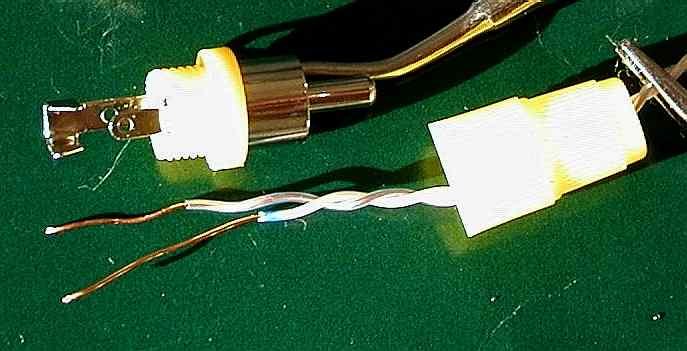
I used the recommended Radio Shack 274-321a RCA plugs. Be careful cleaning the flux off these RCAs, Acetone melts the plastic they are molded from.
Strip the solid color wire back 1/2 inch.
Strip the stripped wire back 3/4 inch.
Put the outer RCA housing on the wire before you solder the wires to the
interconnect.

The stripped wire is the ground. Fold both tabs over the exposed copper.
The solid color wire is the center conductor. Feed the solid color wire from the inside of the top hole, loop it around and make a mechanical connection. Then feed the excess wire into the hole in the center of the RCA plug.
This is the trick: the center conductor gets two solder joints. The first
is at the hole on the tab for the center conductor that was used for the
mechanical connection. The second is at the hole from the swage on the
center conductor. Fill the hole of the swage (crimp) with solder. This
shorts any problems with the mechanical connection. You don't have to fill
the entire cavity of the center hole with solder, just the open hole.
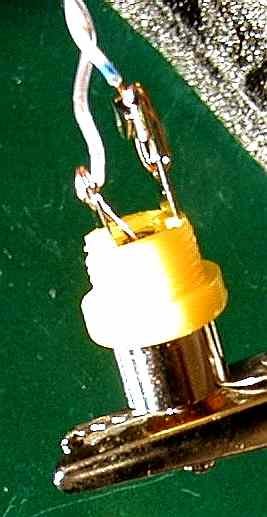
If you have a loop in the wire like the one below, crush the loop with
your needle nose pliers before you solder.
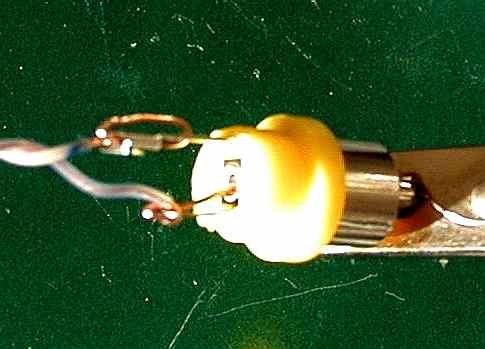
Before you solder, it should look like this:
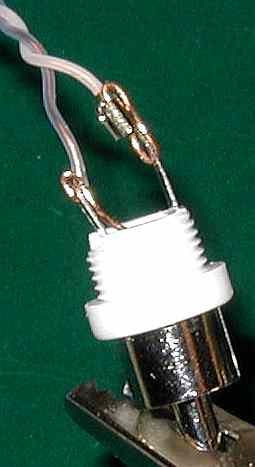
I have not cleaned the hairs from the Q-Tips (tm) I used for cleaning off
yet, but the solder joints should look something like what is shown below.
Shiny solder joints and filling the swage hole is important. So is flowing
solder from the swage hole to the metal tab. I tried to make sure 100% of
the exposed copper got covered with a little bit of solder, but don't use
too much solder. Be careful, if you use too much heat, the RCA plug will
melt.
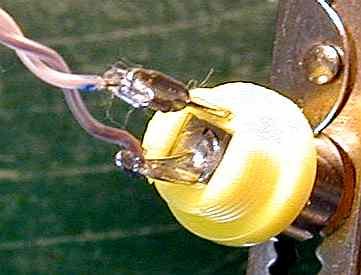
The finished product:
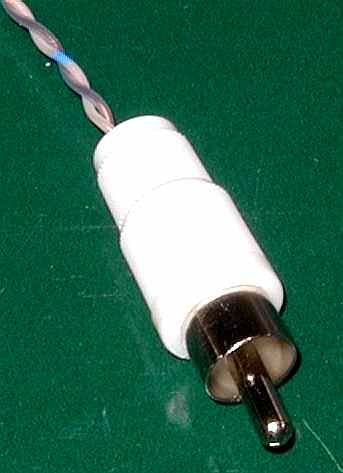
These sound good with no break in. I'll have to burn them in for a while and see how they really sound. Someone was saying Teflon (tm) takes 100 hours to break in!
[ Comment added in later: The cable itself is stiff and springing and if tapped can make a quiet rattling noise. I think if the twisted pair (as a pair) was 3-Braided ( The simple hair braid) with thick fishing line or stiff thread, it would quite these down. This sound doesn't make it to the speakers, it is a separate sound you can hear when you bump the cables. ]
M55988
Plenum 4 Pair (100 ohm input impedance)
24 AWG
UTP FEP Teflon
Jacket: ** White ThermoPlen *
.186 4.7 24 36 UL, c(UL)
CMP, MPP
New idea (not tried yet):
Use two sets (4 wires total) twisted Cat 5 for effectively a 50 ohm cable and then take a thick polyethylene fishing line to "3-braid" the two pairs of twisted wires with the fishing line.
.
 ( New
2024 index page.)
( New
2024 index page.)
 _( Old 2003 index page.)
_( Old 2003 index page.)
 _( AMP Second index
page.)
_( AMP Second index
page.)
 ( Fancy index page.)
( Fancy index page.)